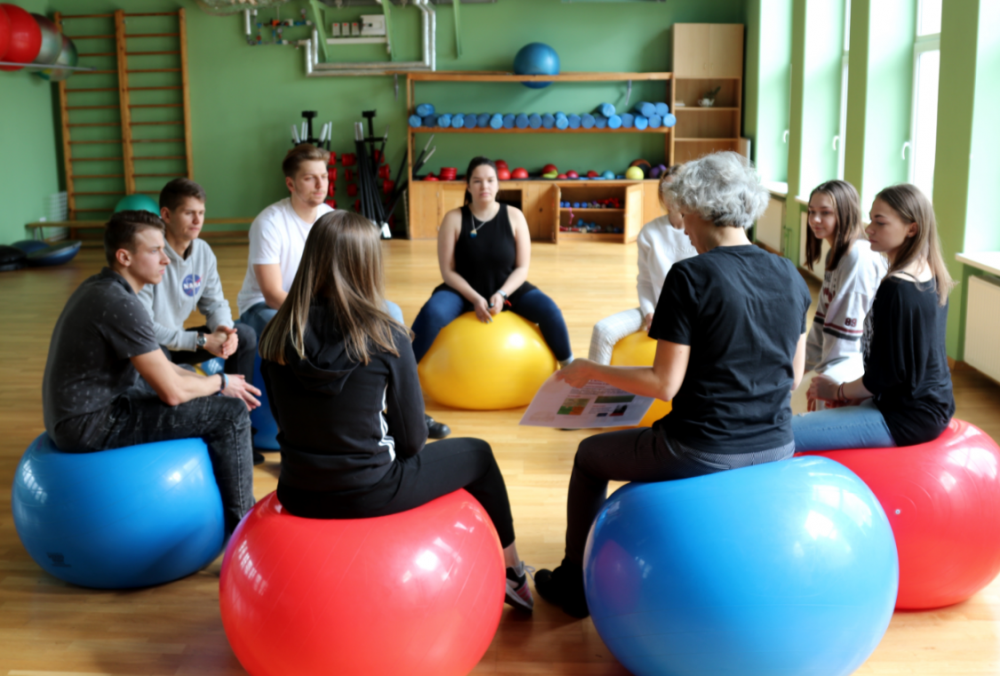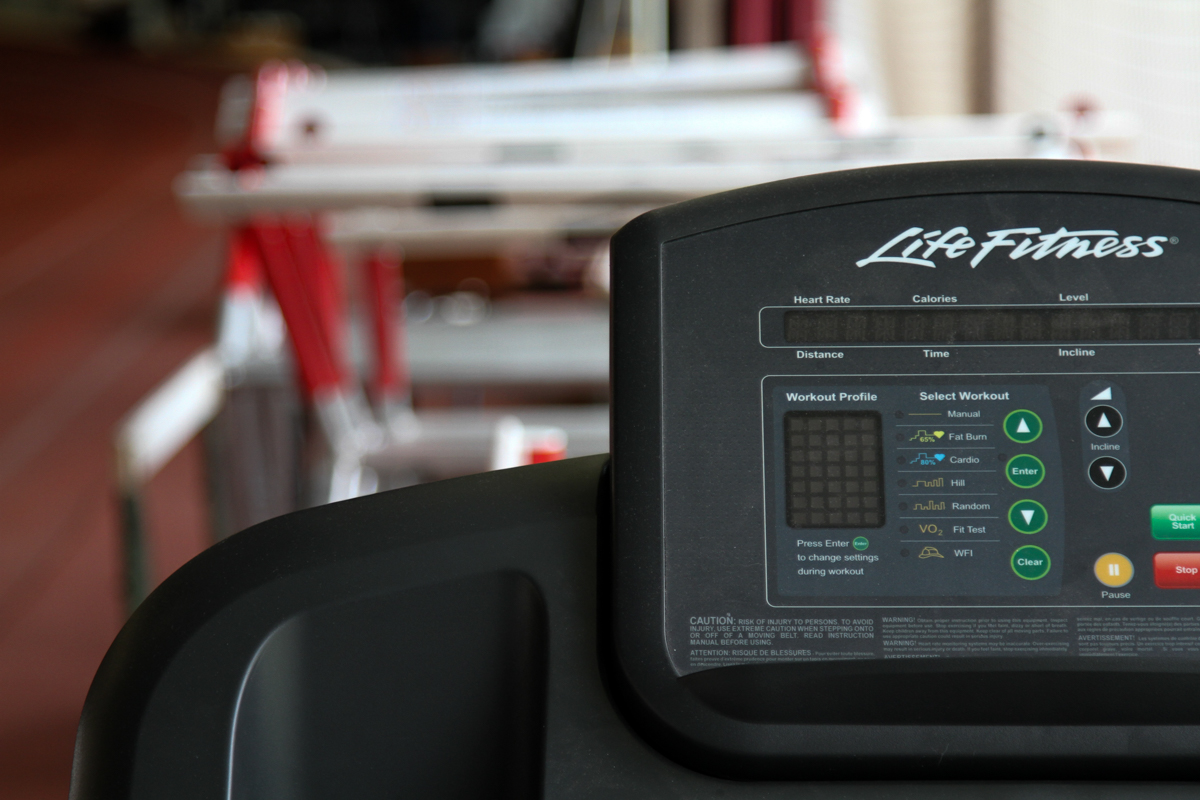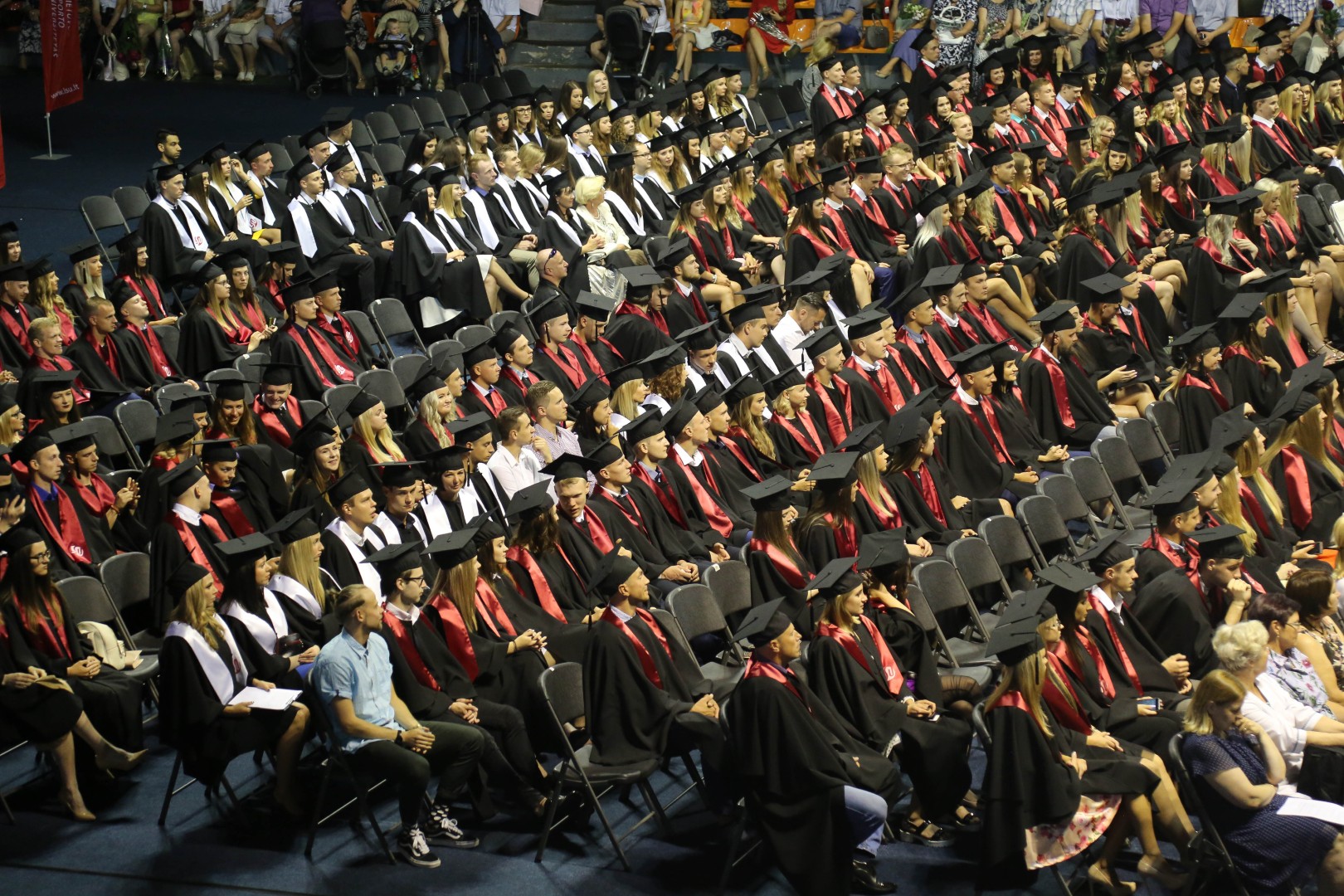During quarantine, people are less likely to go outside, work more on computers, and spend much more time sitting than moving. To ensure that our physical and mental health does not deteriorate during this difficult period, we share the physical activity recommendations prepared by the Ministry of Health (SAM), which include video exercise cycles and insights on the benefits of physical activity by Lithuanian Sports University (LSU) teachers.
Most of an adult’s daily time is spent on professional activities and housework. Leisure time is often spent watching television or browsing on the Internet, which significantly reduces the amount of any physical activity and greatly prolongs the time spent sitting down. However, it is essential to find time for physical activity, as our physical and mental health and quality of life depend on it. How to exercise at home? Use these simple tips to set up a small gym at home for your workouts. A place where you spend most of the time or just have a rest is best suited – for example, an empty corner next to a TV or a place in a study that can be well ventilated. The current intensity of exercise at home should not be higher than usual (before the quarantine). If you have any known medical conditions, it is advisable to consult your doctor regarding the intensity and duration of your physical activity.
1. Use the Internet or specialized literature. It is very good if the exercise is led or supervised by an experienced physical activity specialist or physiotherapist. At the moment, we have to be content with the information we find online, so it is very important to use reliable, science-based sources of information. You will find some links to video exercises and expert advice at the end of the guidelines, and you can find online physical activities that are not intense but original and interesting, such as various dance styles, easy games for which you can make your own tools, simple yoga exercises and the like. It is important to properly assess your ability to perform physical activities without harming your health.
2. Make a list of the equipment you will need based on what you are planning to do and what type of physical activity you enjoy the most. The most important thing is that the chosen activity gives you pleasure, satisfaction and is personally attractive to you. To make your workout easier and more fun, listen to your favourite music while exercising. It would be good for it to match your exercise style and pace. Properly selected music creates the right mood and encourages movement to the appropriate rhythm.
Exercising does not require sophisticated and expensive equipment. Depending on what type of physical activity you decide to practice, you will need a few simple tools: a gym mat, a large gymnastic ball, elastic rubber, adjustable weights (you can use plastic bottles filled with water), a gymnastic bow, a mini stepper, a small but sturdy stool, a skipping rope, etc. A skipping rope is one of the simplest pieces of equipment for exercise – it is cheap, it takes up very little space and burns a lot of calories. Jumping exercises are valuable aerobic exercises as they train the cardiovascular system and strengthen the muscles. For strength training, it is advisable to perform push-ups from various positions, pull-ups, push-ups from the chair, squats (on two or one leg) and other exercises with your body weight that can successfully increase your muscle strength.
3. Set a precise time for your workout. When you are exercising at home and do not need to go anywhere, it is easy to skip the planned training, because all sorts of “more important” or more interesting things happen, so it is recommended to devote regular time to training. It would be good to spend about 1 hour exercising and not rush to do everything you have planned. The minimum duration of exercise should be 30 minutes for adults, 60 minutes for children, and one session should take at least 10 minutes.
4. Be sure to exercise at least a few times a week, preferably daily. You should exercise daily, if this is not possible – at least 2-3 times a week. According to research, 3 moderate-intensity workouts a week is enough to maintain your health, but it would be much better to do it every day, because that way you will form a new, health-promoting habit faster and easier.
Set realistic personal goals that you want to achieve. They should not be too high or unachievable, as this can cause the wish to exercise disappear. It is very important that there is a good fit between the goals, the personal action plan and your personal capabilities.
5. When watching TV, move actively at the same time. If you are particularly busy at home and can’t spend time exercising, try to be physically active in other ways, e. g., walk while watching TV (weights can be attached to your feet to make it harder), do several squats or push-ups from the floor, use a bow or a skipping rope, do selected exercises with elastic bands or simple exercises while sitting on a gymnastic ball, work a soft ball with your hands or knees, stretch an elastic band, stand on a balance trainer (rubber pad or similar device), pedal an indoor cycling trainer or use another simple home exercise machine. In addition, long TV commercials can be great for physically active breaks.
6. Take a fresh look at simple housework. All simple housework or household chores such as washing, ironing, cooking, kneading dough, window washing, carpet vacuuming, dusting, mowing the lawn, car washing, shopping, all kinds of work in the garden or orchard, etc. is a beneficial physical activity in compliance with security rules during quarantine.
7. Actively spend your free time with your family. Physical activity will become important for children if they see it as important and enjoyable for mom and dad. Family habits and values remain for life. If children do not exercise regularly, it is necessary to provide them with other physical activities on a systematic basis. Whether the family is jumping with a skipping rope, dancing, playing family football, playing volleyball, throwing a ball into the basket, going wrestling or cycling and engaging in other currently allowed activities – let the children move as much as possible.
8. Always think of exercise as a necessary and important activity during which you pursue some important personal goals. It doesn’t matter if it is a positive change in your appearance, a better physical shape and health, or an opportunity for fun communication. Find “your” personal type of physical activity and you will see that it is really great.
For exercise at home, we recommend using the video material and methodological advice prepared by LSU.
1. Simple daily exercise (LSU teacher, Head of the University of the Third Age Kristina Visagurskienė):
2. Exercise for the elderly and less physically active people (LSU teacher, Head of the University of the Third Age Kristina Visagurskienė):
3. Easy workout (LSU teacher Simona Pajaujienė):
4. Exercise for those working from home (LSU teacher, Pilates instructor Kristina Zaičenkovienė):
5. How to stop osteoporosis? (LSU teacher, physiotherapist Vilma Dudonienė):
6. Five exercises to help strengthen your back (LSU teacher, Pilates instructor Kristina Zaičenkovienė):
7. Swiss Ball exercise (LSU teacher, physiotherapist Vilma Dudonienė):
8. Balance exercises with a ball (LSU PhD student, Lithuanian aerobic gymnastics champion, participant of European and World aerobic gymnastics championships Viktorija Treigytė):
9. Training at home to strengthen the cardiovascular system (LSU researcher, teacher, President of Kaunas Recreation and Sports Club for Disabled Vaida Pokvytytė):
10. Learning to breathe properly (LSU teacher Simona Pajaujienė):
11. Pilates exercises to build balance and strengthen leg muscles (LSU teacher, Pilates instructor Dr. Kristina Zaičenkovienė):
12. Four forms of physical activity for four age groups (LSU professor, sports scientist Albertas Skurvydas):
13. Exercise – the best antidepressant (LSU professor, sports scientist Albertas Skurvydas):
14. Why molecules and genes are important in sport? (LSU Prof. Dr. Aivaras Ratkevičius):
Information provided by SAM and LSU




